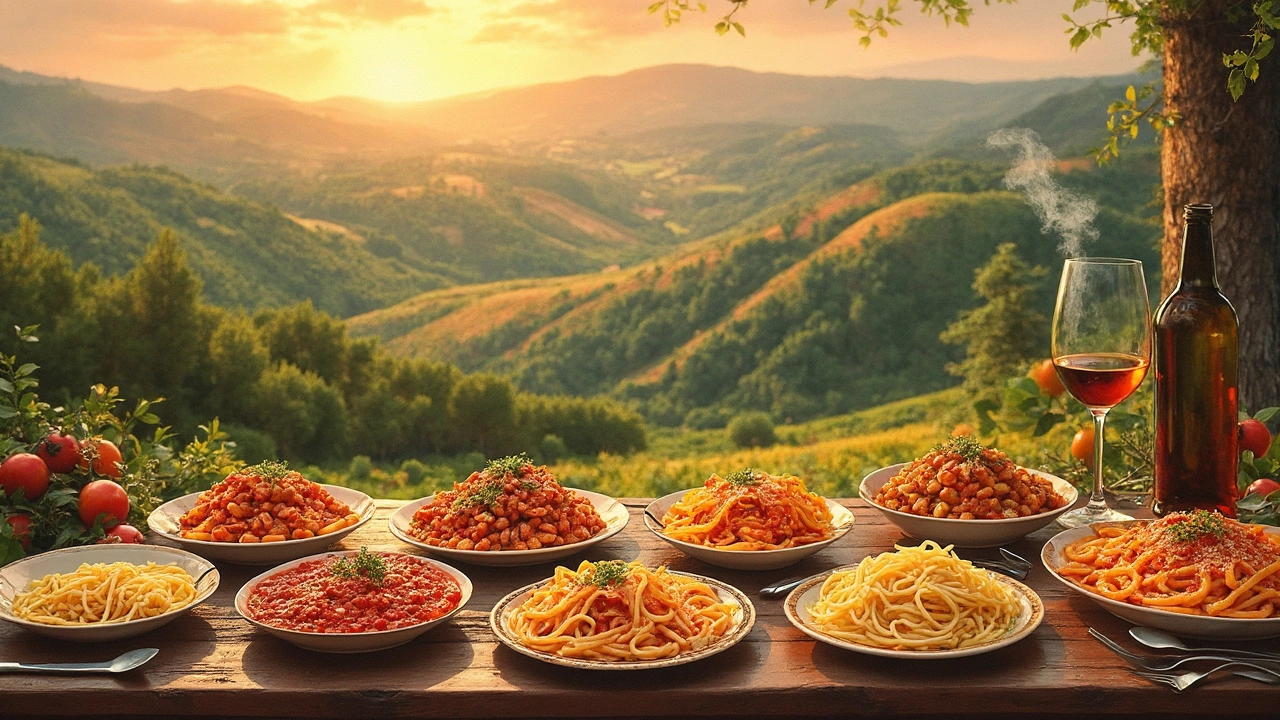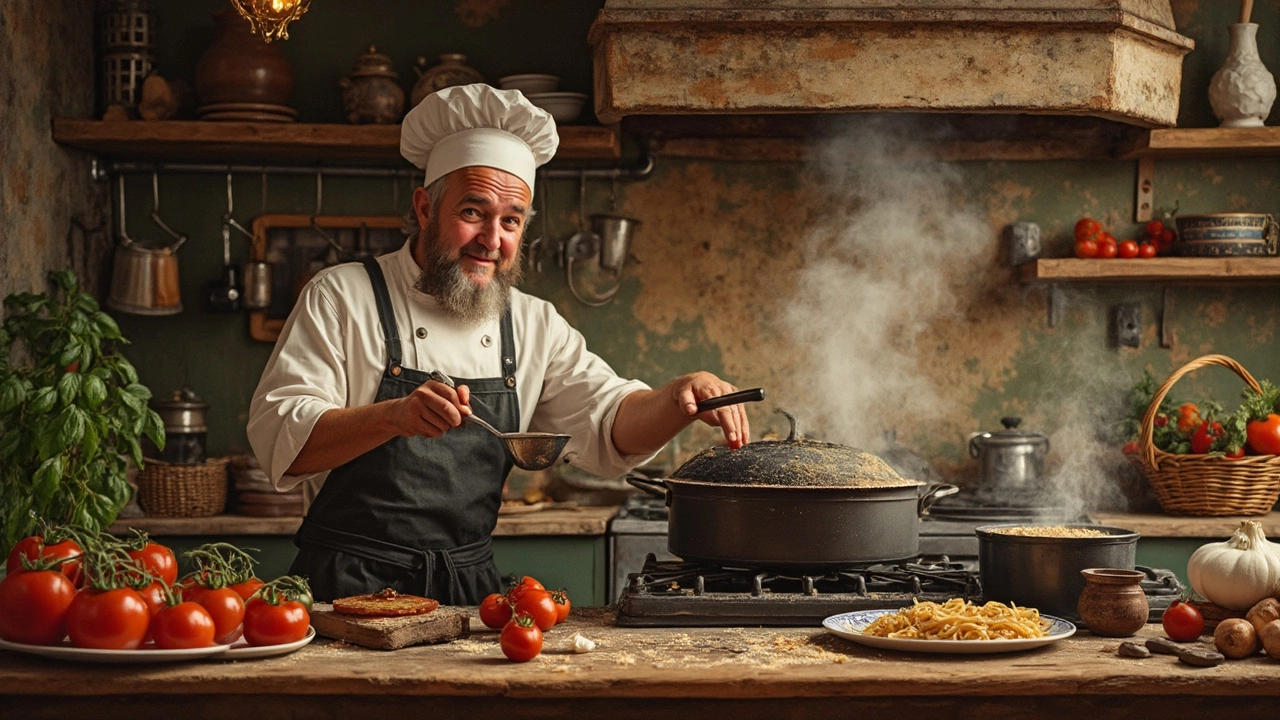When you think of Italy and its rich culinary tapestry, pasta inevitably comes to mind. But among the hundreds of pasta dishes crafting this nation's identity, there's one that's stood out as a beloved favorite across generations. You might be thinking spaghetti, maybe lasagna, but have you ever considered Italy's quiet superstar: pasta carbonara?
There's a charm about carbonara—simple yet delightfully rich, woven with tales of its mythical origin. Now, the Romans argue it was born in their kitchens, claiming an authentic tradition passed through the ages. Between larders stocked with the finest guanciale and the creamiest pecorino, the magic happens, creating a symphony that's hard to resist.
Understanding carbonara is like unlocking a secret code of Italian culture. It's not just about cracking eggs into a bowl or adding a handful of cheese. It's about balance, respecting ingredients, and stirring with finesse. So, what's the trick to making a carbonara right? Stick around, and I'll share not just the secrets, but how you can bring a taste of Lazio into your own home.
- Introduction to Italy's Pasta Culture
- History of the Favorite Dish
- Ingredients that Make It Unique
- Regional Variations
- Cooking Tips from the Pros
- Pairing and Serving Suggestions
Introduction to Italy's Pasta Culture
Italy and pasta go together like penne and sauce. It's a bond built over centuries, cementing Italian cuisine as a global staple. With over 300 different shapes, pasta is more than just food—it's a cultural experience. From north to south, each region brings its unique twist, reflecting the heart and soul of its land.
Let's take a trip to the north, where Milan boasts a rich tradition. Here, fresh pasta reigns supreme. In Bologna, you'll find tagliatelle served with ragù. Move to the south, and it's all about dry pasta. Naples is known for its top-notch spaghetti, an absolute must-try.
Pasta isn't just a dish for Italians—it's a daily ritual. In fact, according to a 2023 survey, Italians consume over 23 kilograms of pasta per person annually. It's not hard to see why pasta is the backbone of family gatherings and festive occasions.
Pasta is ingrained into Italian culture, tied to emotions, traditions, and social gatherings. Some pasta recipes even come with their own stories, shared from grandparents to grandkids. And they say, there's a pasta for every celebration. Birthday? Bring out the lasagna! Christmas? Can't beat tortellini in brodo.
So, why is it such a big deal? Some say it's the simplicity—pasta is easy to make yet incredibly versatile. Use what's on hand, whether it's vegetables, meats, or just a generous grating of cheese, and you've got a meal that's both satisfying and delicious. The key, many Italians insist, is in the quality. Good ingredients make a world of difference.
History of the Favorite Dish
Pasta carbonara doesn't just fill bellies; it comes with a side of intrigue and mystery. Although today it's a favorite dish in Italy, the exact origins of this creamy delight are a bit cloudy. But let's dig into what we do know.
The most popular theory is tied to Rome during World War II. American soldiers stationed in Italy craved familiar flavors and began mixing their powdered eggs and bacon rations with local pasta. The result was a dish reminiscent of today's carbonara. Talk about culinary diplomacy!
Others say it was Roman coal workers, or 'carbonari,' who first whipped up this hearty meal to stay fueled during long work days, hence the name 'carbonara.' Seems like a fitting theory for a dish sopped in rustic simplicity.
Fast forward to the 1950s, and pasta carbonara quietly made its mark on the culinary map, spreading its fame from Roman kitchens to the international stage. Its popularity soared, not just for its taste, but for its straightforward, affordable ingredients.
In its short history, carbonara has also sparked debates. Should one use pasta water or cream? Guanciale or pancetta? Italians are passionate about their food, and this dish is no exception. Remember, when in doubt, go with traditional recipes for that authentic Italian touch!
Ingredients that Make It Unique
If you've ever tasted a genuine Italian carbonara, you know there's something magical about it. First off, let's talk about what doesn't go into traditional carbonara—much to the surprise of many aspiring chefs around the globe. There’s no cream, and no garlic, just the essentials done right.
Pecorino Romano Cheese
Pecorino Romano is one of the stars of the dish. This hard, salty Italian cheese made from sheep's milk gives carbonara its signature tangy kick. It's crucial not to switch this out for any other cheese if you're aiming for authenticity.
Guanciale
Forget the bacon! True Italian carbonara uses guanciale, a cured pork cheek or jowl. It’s fattier than pancetta, delivering a rich depth of flavor to the dish. The fat from the guanciale transforms into a crispy delight, creating a perfect base.
Eggs
The sauce’s creaminess in a carbonara comes from eggs. When mixed right, usually off the heat, they create a velvety richness. The key here is timing—the eggs must not reach a scrambled consistency.
Black Pepper
This might seem basic, but freshly cracked black pepper is essential. It complements the savory notes of guanciale and pecorino, adding a spicy counterbalance.
Pasta
And let's not forget the pasta. While spaghetti is the most common choice, some regions prefer rigatoni or bucatini. Use quality, dried pasta—none of that quick-cooking stuff—and cook it al dente.
| Ingredient | Quantity |
|---|---|
| Pecorino Romano Cheese | 100g |
| Guanciale | 150g |
| Eggs | 3 large |
| Black Pepper | To taste |
| Pasta | 400g |
Now, these are the foundations of a proper Italian carbonara. Getting these key ingredients right means you're more than halfway to savoring that authentic Italian flavor.

Regional Variations
Dipping your fork into a plate of pasta in Italy is like stepping into a whirlwind of regional traditions, each bringing its own flair to the table. Although pasta carbonara is hailed as a Roman creation, the beauty of Italian cuisine is how each region adds its distinct essence, even to a classic.
The Roman Connection
Rome is ground zero for carbonara, where it's all about using the finest local ingredients. Here, you'll likely find the dish cooked with guanciale (pork cheek), pecorino Romano cheese, and fresh eggs. No cream, just pure creamy goodness from the yolks. Some might say it's the original way, but every Italian has a version they hold dear.
Amatrice's Twist
Venture out to Amatrice and you'll stumble upon a debate. This town, famous for pasta all'amatriciana, sometimes inspires carbonara spinoffs. It might involve swapping guanciale for pancetta or using a mix of pecorino and parmigiano, creating a slightly different flavor profile that's just as delicious.
Neapolitan Detour
Down in Naples, the rules relax a bit, and you might even encounter carbonara with a touch of cream. Though purists may shudder, Neapolitans embrace variety, believing that adapting a dish to suit local tastes is just part of the culinary journey.
Simple Sicily
Head over to Sicily, and carbonara might surprise you with the inclusion of local ingredients like wild fennel or even pistachios. Here, cooks balance tradition with creative flair, often driven by what's fresh and seasonal.
Whether you're in the bustling streets of Rome or enjoying a seaside view in Sicily, the one constant is the Italy passion for pasta. These regional variations don't just add diversity to the menu; they reflect a deep-rooted love for making every meal something special.
Cooking Tips from the Pros
Getting that perfect pasta carbonara can feel like trying to nail a magic trick, but fear not! With a few insights from the masters of Italian cuisine, you'll be dishing out plates like a true Roman chef.
Choose the Right Ingredients
First thing's first, the backbone of a great carbonara is quality ingredients. Traditional recipes call for guanciale, a cured pork cheek, which delivers that distinctive flavor. Can't find guanciale? Pancetta works in a pinch, but bacon just won't cut it. Pair it with fresh Pecorino Romano cheese—not Parmesan—and the right kind of pasta, usually spaghetti or rigatoni.
Master the Egg Mixture
Whisking eggs might sound simple, but the trick is in the proportions. Use one egg per serving and an extra yolk for added creaminess. Grate the Pecorino Romano directly into the mix. A dash of black pepper will give it that signature bite, bringing out flavors you can’t get from salt alone.
Perfect the Pasta Timing
The consistency of your pasta matters. Always cook it al dente—you want a slight chew, as it'll continue cooking in the sauce. Reserve some pasta water just before you drain. This starchy liquid is key in thickening the sauce without scrambling those precious eggs.
Combining Ingredients the Right Way
Now here’s where the magic happens. After you've sautéed your guanciale to crispy perfection, remove it from the heat. Add your pasta and a bit of reserved pasta water to ensure it's not too dry. Then, slowly mix in your egg and cheese concoction, stirring vigorously to avoid any curdling.
Finishing Touches
Finally, plate up your masterpiece, give it a final sprinkle of Pecorino, and toss a generous crack of black pepper on top. The sauce should be creamy, not watery, clinging perfectly to every strand of pasta. Trust me, mastering these steps will leave you wondering why people bother with cream in carbonara!
Pairing and Serving Suggestions
So, you've whipped up a delicious plate of carbonara and your kitchen smells like a Roman trattoria. Now, it's time to elevate the experience with the perfect pairings and serving style. Let's get into what makes for a memorable meal.
The Perfect Wine Pair
For wines, carbonara's rich and creamy texture seems to beckon for a crisp, refreshing contrast. Consider a cool glass of Italian white wine, like a Frascati or Verdicchio. These wines offer a nice balance with their slight acidity, keeping your taste buds intrigued. Prefer red? A light Pinot Noir can be a nice choice, avoiding overwhelming the dish's flavors.
Beyond the Booze
If you're skipping wine, a sparkling water with a hint of lemon can cleanse the palate beautifully between bites. It’s refreshing without stealing the spotlight from your main act.
Side Dishes to Accompany
Want to add some greens to your carbonara feast? A simple arugula salad with lemon and olive oil dressing is a winner. Its peppery notes offer a delightful contrast to the pasta's richness.
The Dessert Decision
For dessert, Italian classics are your best bet. Even a small serving of tiramisu or panna cotta can seal the deal. These flavors are subtle enough not to overpower but rich enough to complement the meal.
Setting the Scene
And don't forget the atmosphere! A well-set table with a candle or two can turn your regular dinner into a special occasion. It’s not just about eating; it's about enjoying the full Italian cuisine experience.
Finally, whether it's all served al fresco style or cozied up indoors, the true essence of Italy is sharing. So, gather your loved ones, and make it an event to remember!

